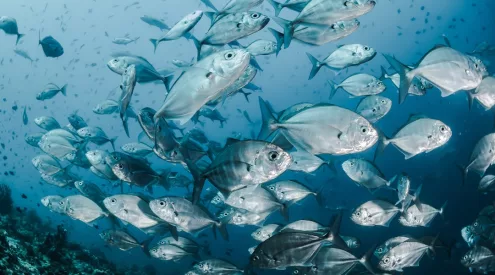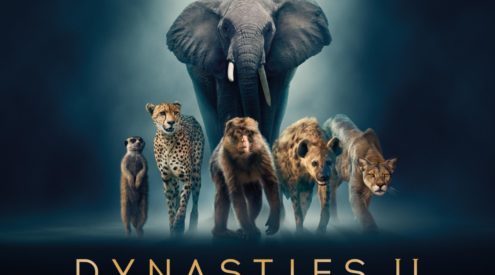As you read this, thousands of malnourished and thirsty elephants are in deep trouble in Zimbabwe’s Hwange National Park. Prolonged periods of drought and a myriad of other factors have pushed the animals to crisis point.
The problems can be traced back over 70 years ago when founder of Hwange, Ted Davison first started pumping water during the dry summer months. He wanted to offer the animals a suitable and safe habitat so they didn’t need to leave, whilst enabling the Park’s tourism to thrive. It worked – the elephants stayed, their numbers escalated and lodges began to open.
Yet despite his good intentions, Davison altered Hwange in a way that no one could have envisaged. With no natural predators (asides from man and the occasional lion, which generally only target calves), elephant populations quickly doubled and continued to grow at around 5% p.a. Although the Park thrives for much of the year, their impact on the environment during the dry season (from September to November), has been devastating.
I have just returned from Zimbabwe with the crew of Ecomentaries, our new company which specialises in green productions (www.ecomentaries.org). The crew included my other half and producer Gemma Catlin, filmmaker Chris Scarffe and editor Werner Kruse.
During filming we witnessed hundreds of starving elephants congregating around bare pans. We saw skin stretched tightly over the elephants’ bodies, their sunken skulls lined with dehydration wrinkles, ribs jutting out of impossibly thin torsos. We heard desperate bellowing and trumpeting, sounds that will long live with me, as they fought for space at overcrowded waterholes. Not all made it: elsewhere, carcasses littered the plains.

Our film will follow the work of one operator, Imvelo (www.imvelosafarilodges.com), who (at great cost) pump water to eight of the Park’s deserted pans.
Yet by pumping water are we handing the elephants a life sentence, by keeping them in unsuitable habitat? World-renowned elephant expert Professor Rudi van Aarde is staunch in his belief that operators should not pump water, which he labels “animal cruelty.” On the ground, Butcher sees a different picture. “I invite anyone to come here, see what is happening at the waterholes every day and then turn the water off.” Whilst owner Mark Butcher, concedes that maintaining the artificial situation is merely a short-term Band-Aid, he simply cannot sit back and watch the animals die whilst the battle for a long-term solution continues. “Simply turning off the water would be catastrophic for Hwange,” he says.

So if man has caused the current problems in Hwange, surely man should be part of the solution? Culling can quickly and effectively reduce elephant numbers. The meat can provide a valuable source of protein for communities that surround the park. Yet to reduce elephant numbers to what the scientists consider ‘sustainable’, tens of thousands would have to be culled; a logistical impossibility that would create international uproar.
On the other hand, Professor van Aarde is an advocate of rezoning. He claims that opening up migration corridors and enabling elephants to move easily between suitable habitats during the dry months is the answer. This would keep their interaction with humans to a minimum. Yet what of the communities that would have to be uprooted for migratory paths? How would we feel if we were told to up sticks for elephants?
Contraception has proven successful at reducing elephant numbers in small, tightly controlled circumstances. However, when considered on a larger scale, this ‘humane’ and ‘natural’ way to control population growth is a logistical and financial nightmare. Recent studies have also indicated huge disruptions within social behavior and that it’s perhaps not as humane as people first thought
Elsewhere in Africa elephant numbers are collapsing, leading to calls for the translocation of Hwange’s giant inhabitants. Yet, similarly to contraception, this is a hugely costly process – a minimum of $2000 per animal. Plus, many parks may desire tens of elephants, but thousands?
Others argue that we should simply let nature take its course. Yet haven’t we interfered to such an extent that we no longer face a ‘natural’ predicament? This would, at some point, lead to a mass die-off of elephants and many other species. Dying of malnutrition and thirst is, we can only imagine, a terrible way to perish.

It’s a multifaceted, mind-boggling minefield of question marks and potential solutions. For each ‘answer’, a number of ellie-sized stumbling blocks remain.
Our film, we hope, will raise awareness around this critical subject. By seeing what is happening on the ground and by interviewing a number of world-leading scientists, vets and conservationists, Grey Matters, will offer a thorough examination of one of Africa’s most pertinent wildlife issues.
Whilst Imvelo donated filming costs, we have launched a campaign on crowd-funding platform Indiegogo, to raise funds for the edit and promotion of the documentary (after all, what good is a great story, when it sits on the edit room floor?). If you are interested in supporting Grey Matters you can donate and see the campaign here: http://www.indiegogo.com/yeartheelephantsdied?a=1401833. All donors will receive a host of goodies – you could even become an Associate Producer. But hurry – the campaign ends on Friday.
If you’re unable to support our campaign, then all we ask is that you keep your ears open and trunks sniffing for news of the film.
For more information on Ecomentaries, head to: www.ecomentaries.org.
To learn more about Imvelo, please visit: www.imvelosafarilodges.com.
















